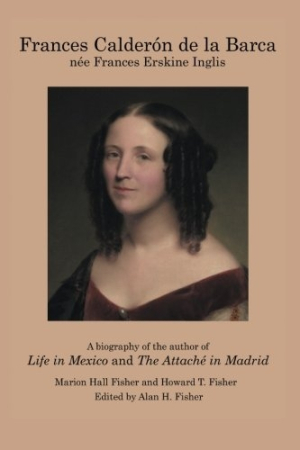Frances Calderón de la Barca
The style and spirit of the narrative text is very much in line with Fanny’s writing style, creating an immersive experience.
Frances Calderón de la Barca is best known today as the author of Life in Mexico, a book that has enjoyed numerous editions and reprints in the 173 years since it first appeared. Little has been written about the author herself, however. In Frances Calderón de la Barca, Marion H. and Howard T. Fisher, editors of the 1966 Doubleday edition of Life in Mexico, remedy this with a thorough and well-researched biography of this spirited and fascinating woman.
Always known as Fanny, Calderón de la Barca led a remarkable life that ranged from upper to lower class and from Europe to North America and back again. Through financial ups and downs, Fanny earned her own way as a writer and educator, continuing these professions even after her marriage to Spanish diplomat Ángel Calderón de la Barca. Her numerous letters and diaries, and those of her friends, form the basis for much of the information here, giving the book a personal feel.
The biography takes many small side trips into the lives of Fanny’s fascinating friends and family, including Fanny Appleton, who would marry Henry Wadsworth Longfellow; George Parish Jr., a would-be suitor who later had a scandalous, eighteen-year affair with Ameriga Vespucci; and the royal family of Spain. Fanny became acquainted with the latter via her diplomat husband in the fall of 1843, just before the thirteen-year-old Isabel II was declared queen, and she would spend the last years of her life living in the palace and educating Isabel II’s children. This supplemental information makes for a more complete picture of the social and political environment Fanny lived in, placing her views and actions in context.
The Fishers obviously admired and cared for their subject, and their fondness for Fanny shows in their work. The style and spirit of the narrative text is very much in line with Fanny’s writing style, creating an immersive experience with seamless transitions between the authors’ insights and quotations from Fanny’s own letters and published works.
This extensively researched and well-organized biography will not only prove invaluable to those researching this noteworthy woman, but also will be enjoyed by those who simply have an interest in what life was like in the nineteenth century. The rich details provided both by the authors and by the primary sources they quote fully bring to life the people, places, and politics of this time.
Reviewed by
Christine Canfield
Disclosure: This article is not an endorsement, but a review. The publisher of this book provided free copies of the book and paid a small fee to have their book reviewed by a professional reviewer. Foreword Reviews and Clarion Reviews make no guarantee that the publisher will receive a positive review. Foreword Magazine, Inc. is disclosing this in accordance with the Federal Trade Commission’s 16 CFR, Part 255.

